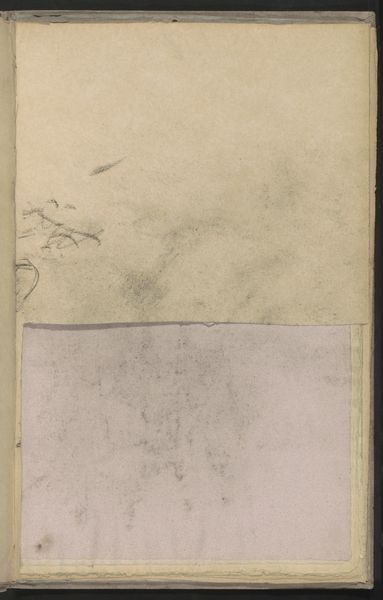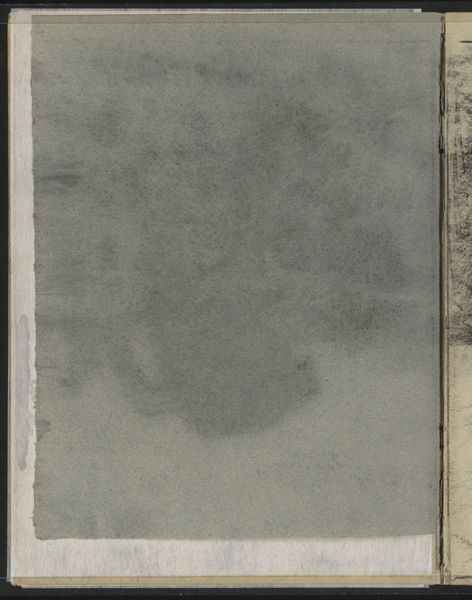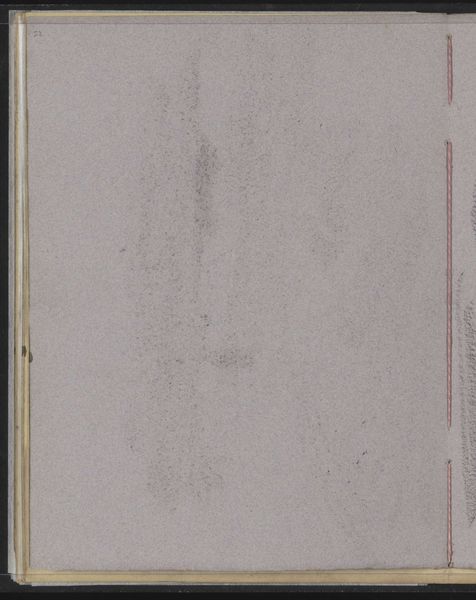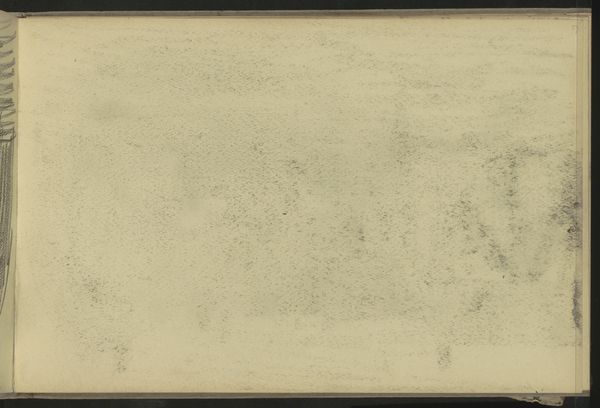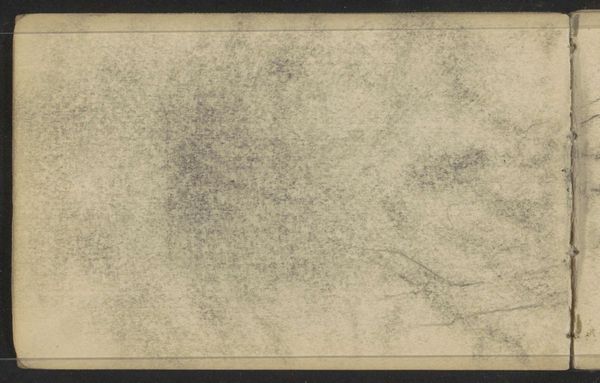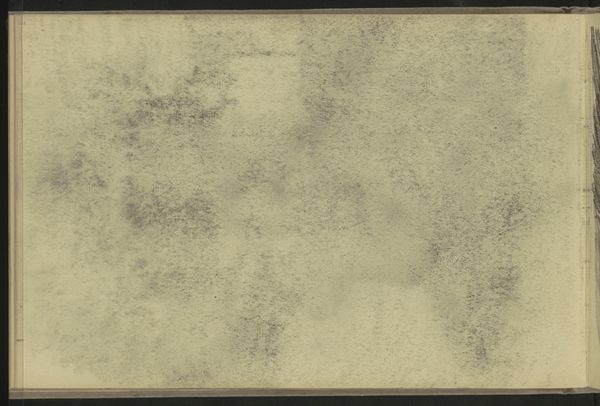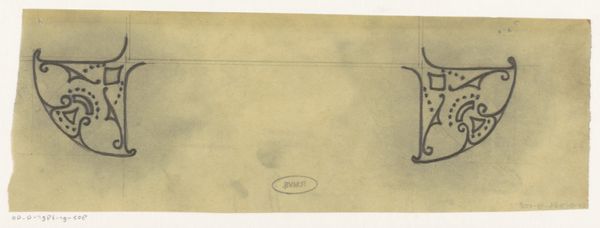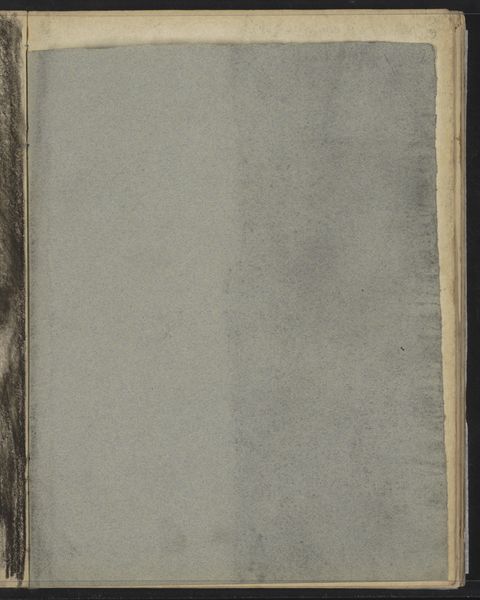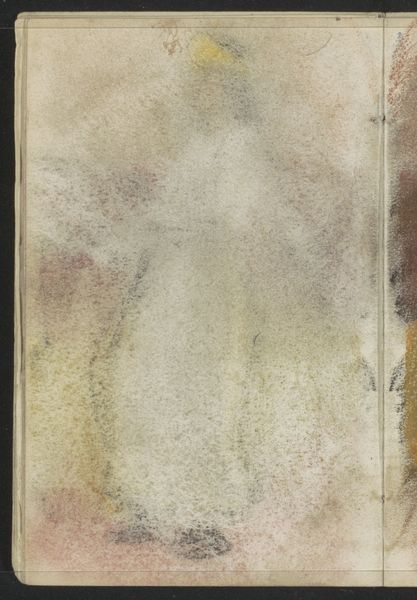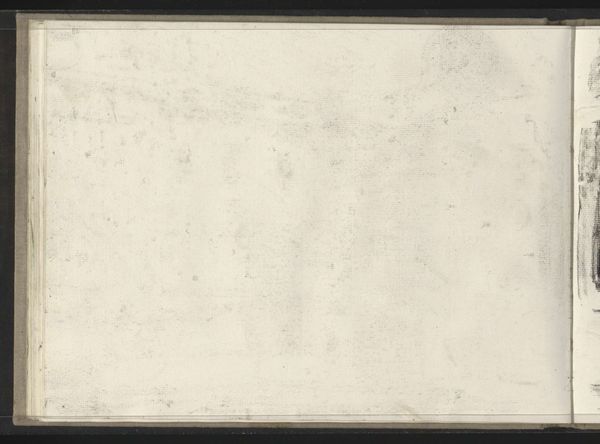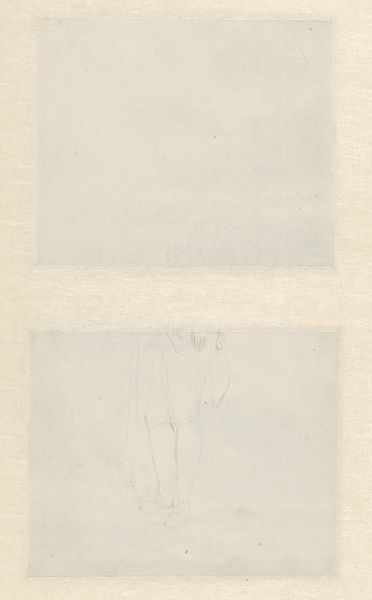
drawing, paper, pencil, graphite
#
drawing
#
aged paper
#
toned paper
#
light pencil work
#
impressionism
#
sketch book
#
incomplete sketchy
#
hand drawn type
#
paper
#
personal sketchbook
#
pen-ink sketch
#
pencil
#
graphite
#
sketchbook drawing
#
sketchbook art
Copyright: Rijks Museum: Open Domain
Editor: Here we have Willem Witsen's "Abklatsch van de krijttekening op pagina 62," a drawing from around 1887 to 1888. It seems like a page torn from a sketchbook, with very faint pencil markings and an interesting, almost accidental, quality. How do you see this piece functioning within the context of late 19th-century art? Curator: It's important to consider how sketchbooks functioned at this time. They were intensely personal spaces, where artists explored ideas outside of the formal expectations of the salon or the art market. This "accidental quality" as you call it, signals a deliberate rejection of academic polish in favor of capturing fleeting impressions, aligned with Impressionist principles of depicting modern life, a direct response against earlier academic painting styles and associated institutional art production. Editor: So, the sketchbook itself becomes a statement? Almost a political one? Curator: Precisely. By showcasing what might be considered process, the artist elevates the sketch to a work of art itself. Consider, too, the materiality: aged paper, graphite, faint pencil lines. These details place the viewer in intimate proximity to the artist’s hand, but I am curious if that feeling makes it relatable to contemporary audiences or isolates it? Editor: That's interesting. I initially found the sketch somewhat unengaging because of its subtlety, but understanding its historical function and almost rebellious intent, does make me view it with new eyes. Thank you! Curator: My pleasure! It demonstrates the continuous process of contextualizing that breathes new meaning and impact to artworks that initially seemed "unengaging".
Comments
No comments
Be the first to comment and join the conversation on the ultimate creative platform.
